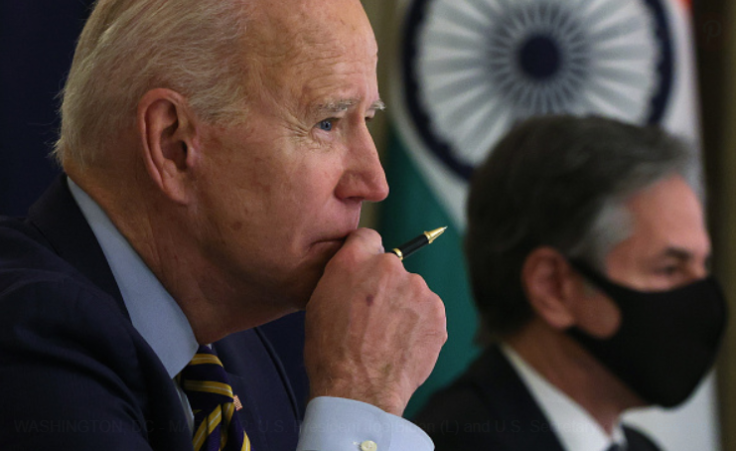
It has been a year since Chinese and Indian troops began engaging in aggressive face-offs at the disputed Sino-Indian border, including several locations in Ladakh along the Line of Actual Control (LAC). Today, the tension between the two has not reduced. Although the two sides agreed to a partial troop pullout in the beginning of this year and recently held their 11th Corps Commander talks, troops have yet to disengage from several disputed points on the border.
Many reasons have been cited for triggering the skirmishes. The root cause is the ill-defined border between the two countries, for which China and India went to war in 1962. Now, both sides accuse the other of infringement and building infrastructure along the border, particularly in strategic areas in Ladakh along the LAC. India pointed to China’s salami tactics to gain territory as one of the main causes of conflict in the disputed area. Indian observers and politicians have criticized the successive Indian governments for failures of intelligence and action to protect the borders. Conversely, China perceived India’s road building as a threat to its territorial integrity and its action was a response to India’s encroachment.
What has not been fully accounted for is the timing and scale of the 2020 skirmishes. Differing perceptions of the LAC has been a constant factor undermining the Sino-Indian relationship. Why did the 2020 border clash occur, and why at this scale? Admittedly, there were instances in the past decade where two sides came close to clash, including the 2013 Daulat Beg Oldi incident, the 2014 Chumar confrontation, and the 2017 Doklam standoff, but these incidents were much more localized and resulted in no casualties. Both sides managed to put aside disagreements and focus on improving the bilateral relationship. The fact alone that the 2020 standoff resulted in multiple casualties makes it a significant incident. More importantly, unlike other territorial disputes it has revisionist intention towards, China has generally preferred to maintain the status quo and not to provoke conflict with its southern neighbor. Thus, it begs the question of what exactly has contributed to China’s shift to a more assertive response towards India.
Unlike other territorial disputes it has revisionist intention towards, China has generally preferred to maintain the status quo and not to provoke conflict with its southern neighbor. Thus, it begs the question of what exactly has contributed to China’s shift to a more assertive response towards India.
Don’t Forget About the U.S.
The fundamental reason for the timing of the skirmishes is geopolitical. Just as the 1962 Sino-Indian border conflict took place against the backdrop of rivalry between the United States and the Soviet Union, the renewed Sino-Indian clash broke out when the United States enhanced its engagement in the region under the guidance of the Indo-Pacific strategy. The deepening engagement of the United States has provided the window of opportunity for India to pursue more assertive policies against China. It has also strengthened China’s sense of vulnerability—as a result of the deteriorating COVID-19 situation, instability in Hong Kong, encirclement from the United States and its allies—and propels the latter to take a more hardline approach against India.
Realizing its influence was waning in Asia by the end of 2017, the Trump Administration began carrying out the Indo-Pacific strategy for the purpose of enhancing its economic engagement, security cooperation, and role in rule-making in the region. The ultimate goal was to manage China’s rising power while maintaining the dominant status of the United States globally. Alongside Australia and Japan, India was among the top strategic partners the U.S. has relied on to balance against China’s influence, especially in South Asia. U.S. allies have echoed this by releasing their own Indo-Pacific strategies. For instance, France published the Indo-Pacific strategy papers in 2018 and 2019, outlining its plan to establish a new Indo-Pacific France-India-Australia axis. In September 2020, Germany and the Netherlands consecutively published their Indo-Pacific guidelines and made clear their priority to deepen the partnership with India, South Korea, New Zealand, and Australia. While these countries’ Indo-Pacific strategies are not excluding China, their selection of prioritized partners would more or less undermine China’s influence in the region. Though the United Kingdom has not published any formal document on its Indo-Pacific strategies, it has already begun “tilting” towards the region for both economic and security reasons. Apart from opening its naval support base in Bahrain in 2018, the UK plans to undertake the first operational deployment of its new Queen Elizabeth aircraft carrier through the Indian Ocean.

China has been highly sensitive towards the Indo-pacific strategies and other containment measures adopted by the United States and its allies. As early as 2018, it expressed concern about the U.S. strategy to contain China through military, diplomatic, and economic engagement with the states in the region. Recently, China has been increasingly disturbed by the Quad—consisting of the U.S., India, Australia, and Japan—and its activities. While the Quad defines itself as an “informal” group focusing mainly on non-security issues such as pandemic relief, China perceives it as a strategic alliance, or a “small geopolitical clique” led by the U.S. that aims to divide Asia and contain China. China’s concern is not ungrounded. The Quad has been actively seeking expansion to Quad Plus, with talks of extending invitation to China’s potential strategic partners. This heightens China’s concerns about other countries joining the Quad, Bangladesh, for instance, was warned by Chinese ambassador to Bangladesh Li Jiming to stay away. In April 2021, a three-day naval exercise was carried out in Bay of Bengal jointly by the Quad countries and France. The “Quad-plus” exercise alerted Beijing and was condemned by the latter as an “Indo-Pacific NATO”. Previously, China had focused primarily on issues such as the Taiwan independence, Hong Kong stability, and the South China Sea dispute. But the fact that India took steps to become closer to the West both militarily and economically has changed China’s stance.
Driven by the concern for the pressing economic and military growth of China and its increasing power projection capability, India has sought U.S. assistance in order to gain advantage over China along the Himalayan frontier and dominance in the Indian Ocean. Chinese sources reported that right after the Doklam standoff, India invited Western military officers to visit the disputed areas along the Sino-Indian border, including Pangong Lake. During U.S. President Trump’s visit to India in February 2020, India purchased 24 Sikorsky MH-60R naval multirole helicopters worth about USD $2.12 billion. The helicopters are expected to help Indian navy detect and track Chinese submarines, drones and surface ships that are operating more frequently in the Indian Ocean.
India has also extended its strategic partnership with the U.S. allies. In early June 2020 in the mid of the border tension, India signed a defense agreement with Australia to gain access to each other’s military base. It has been championing the Free and Open Indo-Pacific (FOIP) idea and engaging actively with its Indo-Pacific partners in a multitude of spheres centering on maritime security, blue economy, and maritime connectivity. The active outreach by the Modi Administration was viewed by China as outright abandonment of its non-alignment policy. As a result, India was emboldened by the support from the U.S. and its allies to take on a more confrontational China policy.
Perceiving the threat from the growing ties between India and the United States, China altered its stance from passive defense towards active defense. While it still remains inconclusive who initiated the 2020 clash, it can be certain that China went into the conflict with preparation.
It is under the above geopolitical condition that China turned more assertively towards India along the border in 2020. In the Chinese view, China had previously took a passive-defensive stance along Sino-India border and regarded border incidents as part of its crisis management. While it was not desiring to relinquish any territory in the dispute, China preferred not to provoke conflict with India. However, the new developments along the border, including India’s provocation at the Doklam area in 2017 and India’s a abolition of Article 370 which intended to unilaterally change the status quo of Kashmir, have made China realize the ineffectiveness of passive defense. Perceiving the threat from the growing ties between India and the United States, China altered its stance from passive defense towards active defense. While it still remains inconclusive who initiated the 2020 clash, it can be certain that China went into the conflict with preparation. China was ready to send a message to India and its partners that China has strong capability and resolve to deter any incursion of its territory, even when it is experiencing vulnerabilities both domestically and internationally.
Looking Ahead: Tensions Unlikely to End
As the standoff continues, some observes point to the growing Hindu nationalism that shapes the occurrence and duration of the border conflict. Chinese analysts have noted the growing Hindu nationalism is partly the Modi Administration’s own engineering in order to divert public attention from domestic problems such as the underperformance of economy. Additionally, China considered the support from the United States. and other Western countries contributed to India’s “overconfidence”, which emboldened the latter’s aggressiveness against China.
While growing nationalism might account for India’s unwillingness to compromise, it takes two sides to result in a conflict. If China had maintained its stance of passive defense, perhaps the 2020 clash would not have occurred, even under the shadow of heightened Hindu nationalism. Instead, it was an emboldened India and an encircled China combined, activated by the U.S. involvement, that led to the conflict that has surprised many. Unfortunately, due to the irreconcilable security competition between the U.S. and China increasingly being played out in the Indo-Pacific, tension between China and India is unlikely to fade away any time soon in the foreseeable future.
Editor’s Note: This article appeared as part of our four-part series on the one-year anniversary of the 2020 Sino-Indian border standoff in Ladakh. In this series, contributors discuss the impact of the standoff and clashes in Galwan on China and India’s strategic priorities, threat perceptions, and bilateral relationship in the years ahead.
***
Image 1: STR/AFP via Getty Images
Image 2: Alex Wong/Getty Images


